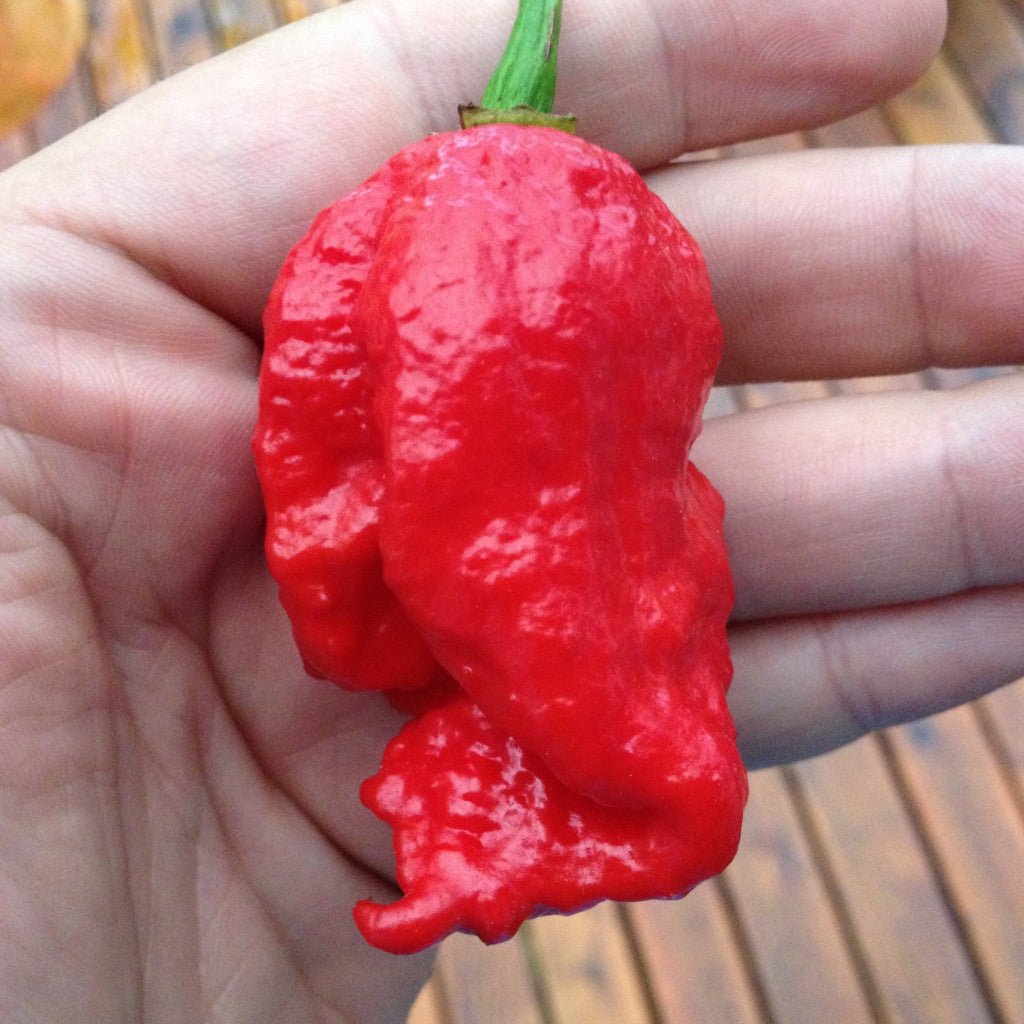
If the word “frost” features in your climate, you’ll need to pot up your plants and bring them into your home – or a garage, shed, or greenhouse. To do this, follow the pruning directions described below and apply a thick layer of winter mulch and if necessary, wrap the stems in fleece covers, such as these, available on Amazon. In frost-free locations, your plants may be overwintered in place. If you’re growing your peppers in the ground, you’ll need to pot them up. There are a few steps you need to take before you put your hot peppers to bed for the winter and they’ll require a little bit of maintenance over the cold months.
#Carolina reaper plant not producing how to
That’s next-level obsession and I’d better have shares in the local electricity company first… How to Prepare Your Hot Peppers for Winter I haven’t (yet?) got to the point where I keep my plants in artificial warmth and light so that they fruit year-round. Those that have wintered-over have strong root systems which allows them to get going with the serious business of reproduction much earlier than all those babies carefully tended in a grow tent – or on your windowsill, depending on how far your pepper obsession has progressed. The main advantage of overwintering those long-season super-hots is that while you are waiting for seeds to germinate, for seedlings to develop their first true leaves, battling pests, and patiently hoping for a fruit to develop – your overwintered plants are out of the starting gates faster than Secretariat.

Would you like to try your hand at growing ghost peppers? If so, check out our growing guide to learn more. In my experience, jalapenos often don’t make it, but my favorite brain-melter, the ghost pepper, seems to come back flying and fruiting after a long day’s journey into the winter night. With their mind-numbingly long growing season, it may come as a surprise that the “super hot” peppers seem to be more successful at overwintering than some of their less mind-blowing brethren.

Which is why from the middle of winter my grow tent is filled with a number of seedlings – and my electricity bill is suffering. I’ve had good success with the majority of my hot peppers, but as mentioned, I expect to lose a few. Make sure you choose your strongest, healthiest looking specimens as weaker ones aren’t likely to survive. It may be that the plant was suffering from lack of nutrition during the growing season, or the temperature dipped a little bit too low – or perhaps it took offense to your pruning methods. I say “in some cases” because not all plants survive the overwintering process, for a variety of reasons. In cooler locations, with a bit of preparation, we can let them go dormant for the winter months and in some cases, they’ll bounce back come spring, ready to fruit in the warm weather. In tropical gardens, it’s possible for plants to fruit year-round, when they are provided with the ample sunshine and warmth they require. Temperatures below 35☏ will kill the plant. They are frost-tender and when nighttime temperatures drop to below 60☏ and the days become shorter they will start to go dormant and drop their leaves. Hot peppers are tropical and subtropical perennial species in the Capsicum genus. How to Prepare Your Hot Peppers for Winter.In this guide I’m going to walk you through how to prepare hot pepper plants for the winter, so if you’ve got a favorite growing this year, you can give it a try! He’d survived three Zone 9 winters, and I guess he’d just had enough. He was old, so I thanked him for his service and put “big hab,” as I called him, onto the compost pile. Another, a big, beautiful habanero, seemed to suffer and only produced small quantities of tiny fruit. Hot peppers can be temperamental to grow, and one or two of the smaller ones simply failed to thrive. I’ll confess, I lost a few, which is to be expected. Others were in their fourth year of wintering-over. Some of them were small – ones I’d started too late and had only produced a modest amount of fruit. Yes, I was a little bit surprised when I actually counted them. Last season, I overwintered 38 hot peppers. I used to do this, but over the years as my “pepper obsession” grew, so did my collection of unusual varieties. Many gardeners treat hot peppers as annuals, and simply start new ones from seed in the winter months, ready to set out when the weather warms up in spring. If you buy from one of our links, we may earn a commission.


We link to vendors to help you find relevant products.


 0 kommentar(er)
0 kommentar(er)
